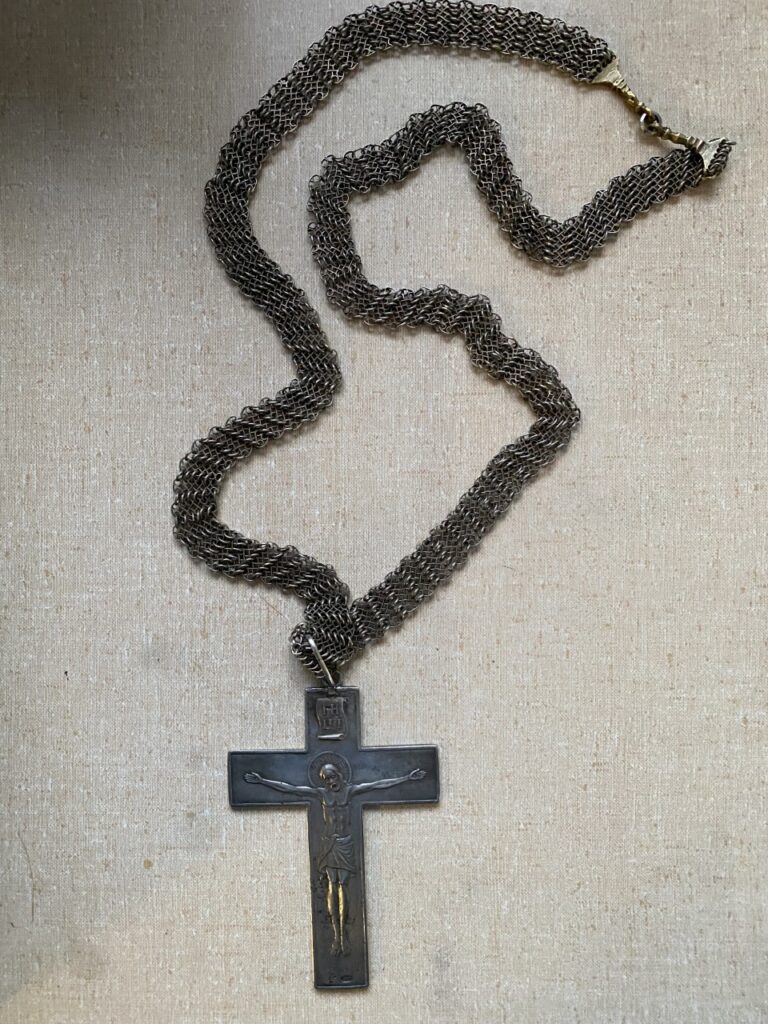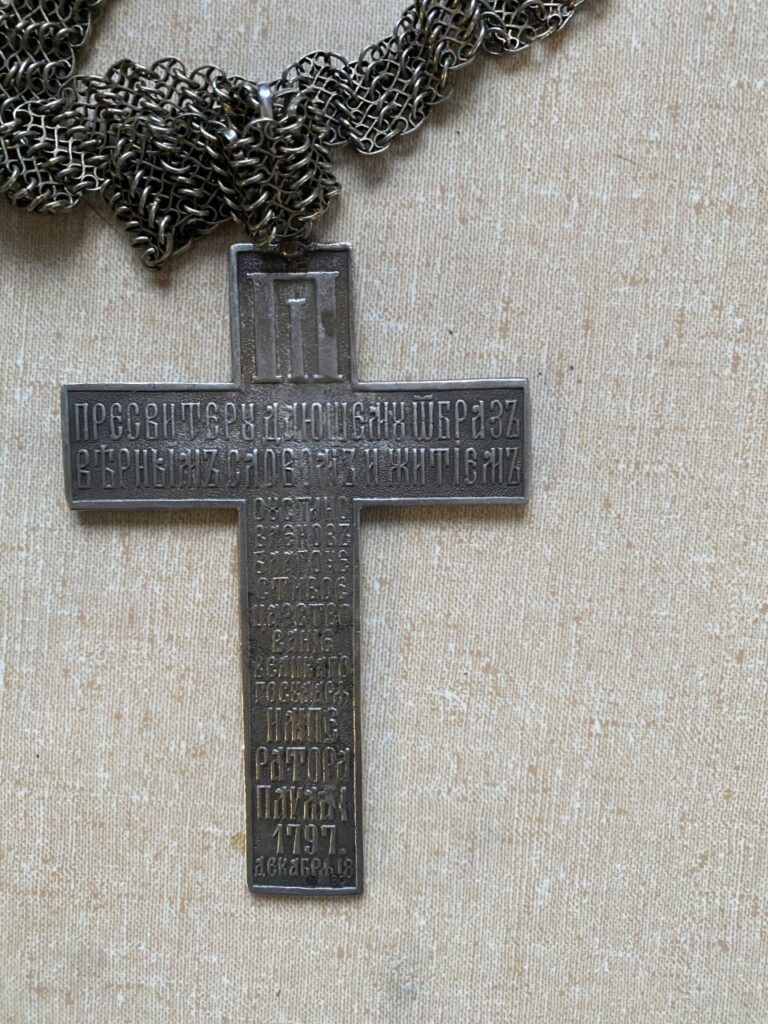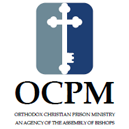This post was originally published on this site

On a recent Sunday morning during coffee hour, a dear member of our parish gifted me with a pectoral cross. He had found this cross in a store down in New Mexico and thought I should have it. It is a simple cross with a unique chain that reminded us of the chain mail worn by medieval knights (or of mithril shirt worn by Bilbo Baggins in The Hobbit). On the back of the cross was a symbol at the top with writing in what appeared to be Russian Slavonic or Cyrillic. At the bottom, the year 1797 was written.

It was a kind and loving gift that blessed me greatly. I decided to pursue a translation of the back by sending photos to a dear brother priest who has a doctorate degree from Moscow, Fr. John Kowalczyk. He was so very excited to receive the photos and went to work on the translation right away. He was able to translate most of it, but said some of it was quite difficult and he had no idea what the symbol at the top might be. The next day, he drove into St. Tikhon’s Seminary and discovered the retired Professor of Church Slavonic, Serge Arkhipov, was working in the library. He had just returned from Switzerland.
The two of them went to work on doing the complete translation. The first thing the professor wanted to search out was the symbol on the top which he called a “Cipher”. Each Emperor of Russia had a Cipher that marked his official work. That Cipher belonged to Emperor Paul 1.
He was the son of Catherine the Great who likely killed her husband, Peter III, in her rise to take the throne as Empress. During her rule, the rights of the peasants and serfs were denied on many levels, even to the point of causing riots. It was amazing that Paul survived her reign to actually become Emperor in 1796. During his reign, he reversed some of the evil done against the serfs and peasants and he tried to enforce a code of chivalry on the nobility. Because of this and other issues, the nobility plotted his assassination which occurred in 1780. His reign as Emperor was quite short. Some Orthodox venerated him as a saint, but this was never officially recognized by the Orthodox Church.
Having found the Cipher, the two translators went to work on the rest of the writings. Here is their translation of the back side of the cross:
“To the Presbyter who presents an image of being faithful to the Word, and his faithful way of life.
This award is established during the pious reign of our great lord and sovereign Emperor Paul 1.
1797
December 18”
As I read this translation, looking at the cross, I was so very humbled. I thought about this faithful priest, who loved the Lord and was living a Godly life. He was one who was both a hearer and doer of the Word of God. The verse of Scripture which comes to mind is 1 Timothy 4:16 – “Watch your life and doctrine closely. Persevere in them, because if you do, you will save both yourself and your hearers.” I pictured this priest receiving this cross from the hand of an Orthodox Emperor. Wow! How humbling that must have been.
Then I tried to picture the incredible journey this cross has been on. Where did it go after the first priest? How many hands received it and passed it on? How did it survive being melted down during the Communist rule? How did it come to the United States? How did it end up in a store in New Mexico? So many “divine appointments” took place in its journey. After 225 years, this cross is once again on the neck of an Orthodox priest serving at the altar of an Orthodox Church.
Because I didn’t know the journey this cross had taken, I blessed in on the Holy Gospel this past Sunday. During the preparation service (Proskomide), I prayed for Emperor Paul 1 and for the unknown priest who received the cross. I also asked for their prayers.
I do not have words to express the feelings inside of me as I put this cross with its “mithril chain” over my neck. “If anyone would come after me, let him deny himself, take up his cross, and follow me!” (Mark 8:34) I believe it is God’s way of letting me know I need to become a better priest and a better person. I need to be like that “Good Samaritan” from Sunday’s Gospel reading. I need to watch my life and my doctrine closely and persevere in them. The journey of this cross and the impact it brings is certainly not over.
May God bless you in your journey with Him!!
Fr. Stephen


